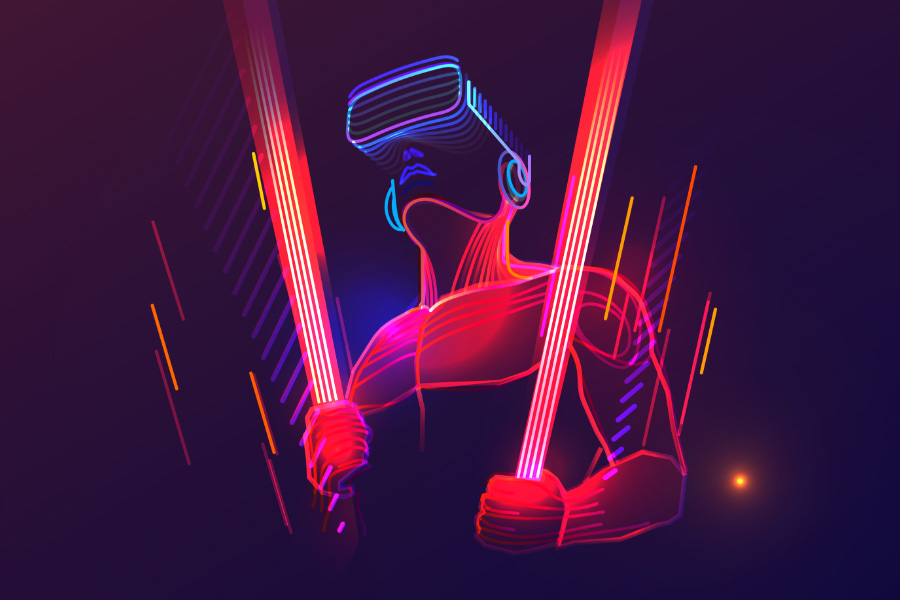
Technological development has massively impacted the entertainment and media industry. Technology has completely changed the entertainment industry from what it looked like 10 years ago. The transformation from analog to digital, the modernization of equipment, internet and automation comes with new challenges and opportunities. Companies within this industry are constantly having to adapt to the latest technology in order to stay competitive and visible to their customers. Digital media, mobile, big data, AI, and augmented & virtual reality are the driving forces of this transformation on the entertainment industry.
Customer experience is as important as the product and service itself. In today’s digital world, your audience can reach you through the web or mobile at any point in time. Complete and consistent visibility is vital in order to stay ahead of the highly competitive entertainment industry.
Mobile
Mobile devices have left the desktop behind, and their usage has significantly increased over the past few years. Smartphone penetration among users is increasing in both developed and developing countries. The growth and reach of 4G has made it possible to access high-quality content through mobile devices. Omnichannel user experience ensures consistency, visibility and a larger reach without compromising the loss of data between different platforms. Mobile search advertising in the US has increased from $14.7 bn in 2015 to $37.43 bn in 2020.
Digital media
People are now paying for video services from ad-sponsored traditional media. Netflix and Amazon Prime are providing content on the go, while live streaming is becoming a popular trend. Traditional print media companies are building more profitable digital operations powered by comprehensive digital platforms using the latest technologies. Event organizers and online ticketing platforms are using web and mobile-based apps to better optimize their ticket distribution system.
Data
Companies are now using bigger data to analyze their business. It helps them understand consumer behavior in the entertainment industry. AI has helped to assess, plan and target the content to the right audience to increase user engagement and attention. It also helps to provide tailor-made content choices to the end-user.
AR/VR
Augmented and virtual reality has recently gone mainstream with the fashion industry, gaming and theme parks using this technology. It provides a hyper-realistic and a more immerse experience to their consumers. Camera devices and the content generation software are also becoming smarter.
Blockchain technology and entertainment
The role of blockchain technology in the entertainment industry is another transformative trend that's worth noting. Initially recognized for its application in cryptocurrency, blockchain technology offers the entertainment industry a decentralized platform that enhances the protection of intellectual property and enables efficient and transparent transactions. This technology can also significantly reduce piracy, a persistent problem in the entertainment industry. In music, for instance, blockchain can be employed to create a decentralized database of music rights, ensuring artists and producers are fairly compensated for their work. In film, it can be used to provide secure, irrefutable proof of authorship.
Artificial Intelligence and Machine Learning
Artificial Intelligence (AI) and Machine Learning (ML) are other technological advancements that are making significant strides in the entertainment industry. Algorithms are now capable of suggesting personalized content based on individual user preferences, drastically improving the user experience on digital media platforms like Netflix, Spotify, and YouTube. Moreover, AI is being used to create content, from scripted short films to music compositions, pushing the boundaries of what is possible in entertainment. On the other hand, machine learning can analyze trends and patterns in user behavior, giving entertainment companies valuable insights that can be used to predict the success of a particular piece of content.
5G and cloud-based services
The advent of 5G technology is set to revolutionize the entertainment industry with its higher data speeds and lower latency. 5G will allow for high-quality streaming of 4K and 8K videos on mobile devices, creating a more immersive experience for users. Additionally, with 5G, the potential for real-time, interactive experiences becomes a reality, offering exciting opportunities for gaming and live events.
Cloud-based services are also becoming increasingly prevalent in the entertainment sector. They offer scalable storage and computing power, enabling companies to efficiently process, store, and stream vast amounts of digital content. Additionally, cloud gaming platforms like Google's Stadia and Microsoft's xCloud are disrupting traditional gaming, allowing users to play high-end, graphics-intensive games on any device without the need for expensive hardware.
Read on: How Can You Save Up To 65% On Your Cloud Costs?
Internet of Things and smart homes
Lastly, the Internet of Things (IoT) and smart homes are further altering the entertainment landscape. With the increasing popularity of smart TVs, speakers, and other connected devices, users now have the power to customize their entertainment experiences like never before. IoT devices can learn from user preferences and routines, making intelligent recommendations, and even adjusting the ambiance of a room to match the content being played. As this technology continues to evolve, the line between technology and entertainment will blur even further, leading to a future where entertainment is integrated seamlessly into our daily lives.
The media and entertainment sector covers a diverse range of companies from advertising, broadcasting, digital media, gaming, entertainment, music, theme parks and publishing companies. These companies within the sector have personalized needs according to their customer requirements and the market they’re operating in.
A strong online media platform & digital media apps are the requirements of a media publisher while a theme park requires a safety, compliance and incident management system.
How can you use new technology to your advantage?

If you acknowledge technology as something that could boost or secure your position on the market, it’s logical to try to use it to your advantage. But how do you do it? First of all, think of technology and its trends as a solution to solve your customer’s needs. It shouldn’t just be something for your company to shine and gloat about – make it useful.
We have worked with some of the pioneers of the Media & Entertainment industry like IMG, NFW, Mogo Interactive and Hyde Park Winter Wonderland, among others. The solutions we created have one thing in common: they propose value to customers.
Using technology and trends for buzz may be a short-term tactic for gaining some attention, but in the long run, it’s wasted money.
At Rare Crew, we specialize in providing an innovative blend of sophisticated technology, design and compelling experience. Our team can build tailor-made CRMs, CMS and ERP solutions. The real challenge is to successfully apply trends and bind them to your core business solutions. For example, let’s take services commonly requested by our clients:
- Content acquisition
- Rights management
- Employee management & engagement solutions
- Contract negotiations & sponsorship
- Automation processes
- Customer relationship cycle
- Integrated solution to collect and analyze data
- Real-time reporting and analysis
- Conversion of raw data into valuable decision making
With the right approach and design thinking, you can use every trend mentioned above and connect it to the service. That’s the real creativity in app development, because let’s be honest, you can develop it all: functional enterprise applications, eCommerce, mobile and web platforms, data analytics tools and productivity solutions. But without a USP, something that makes it really valuable for both sides, it’s only one app amongst thousands of other generic solutions.
So, do you want to propose real value to your customers? We suggest you think about custom and tailor-made solutions that are designed specifically for your needs. Let’s discuss it together.
Read on: How Custom Software Development Can Help Your Business
